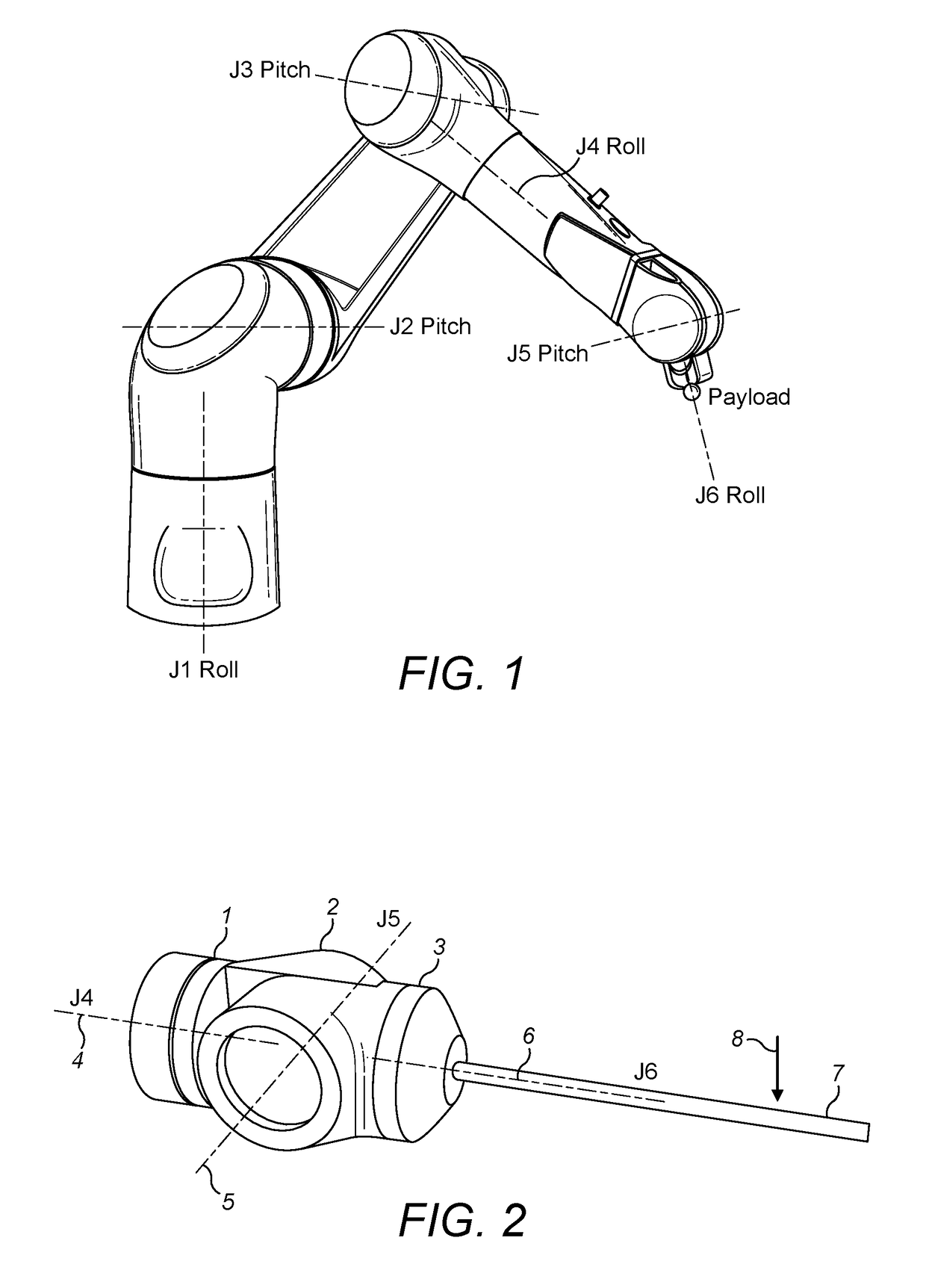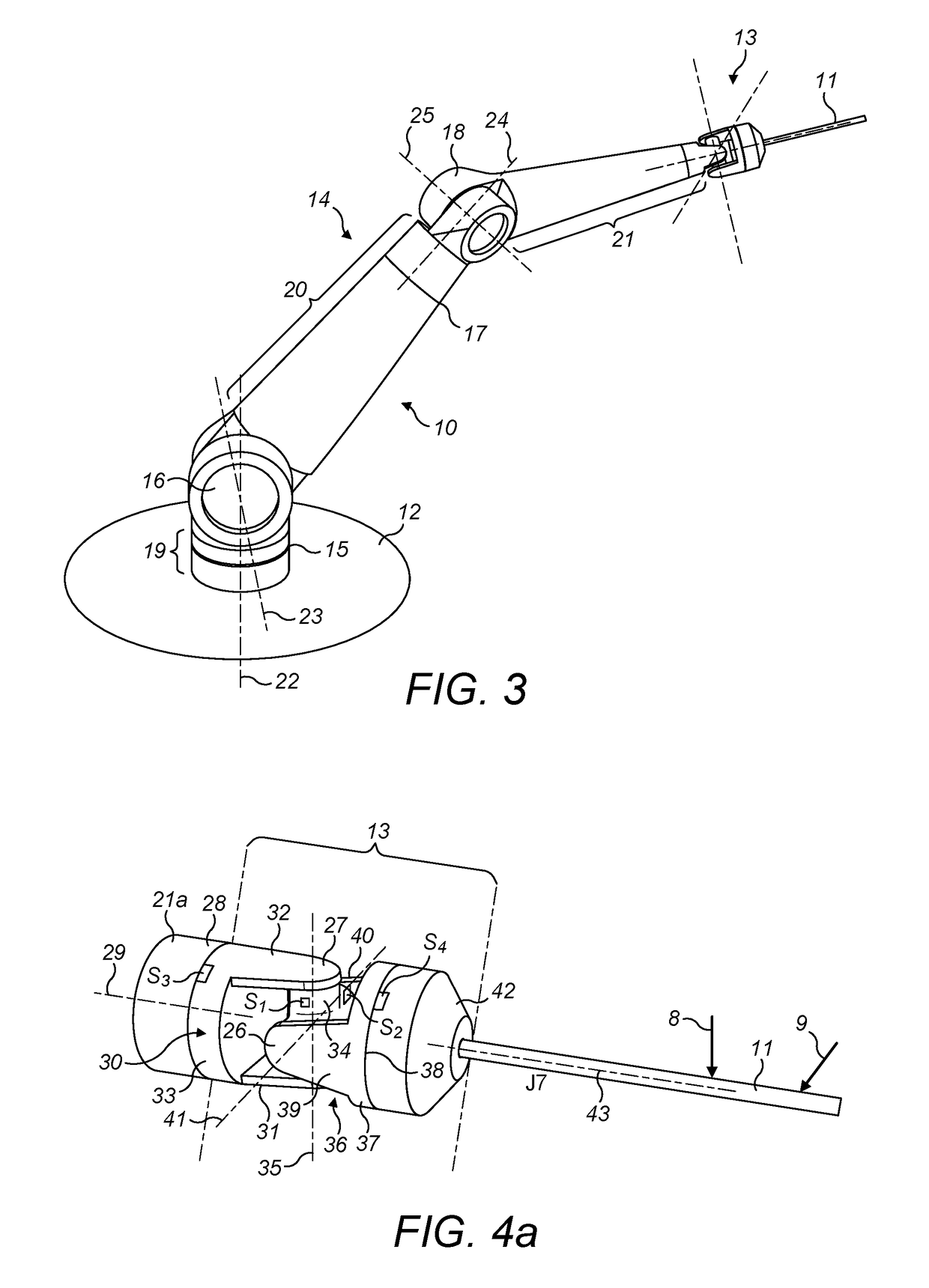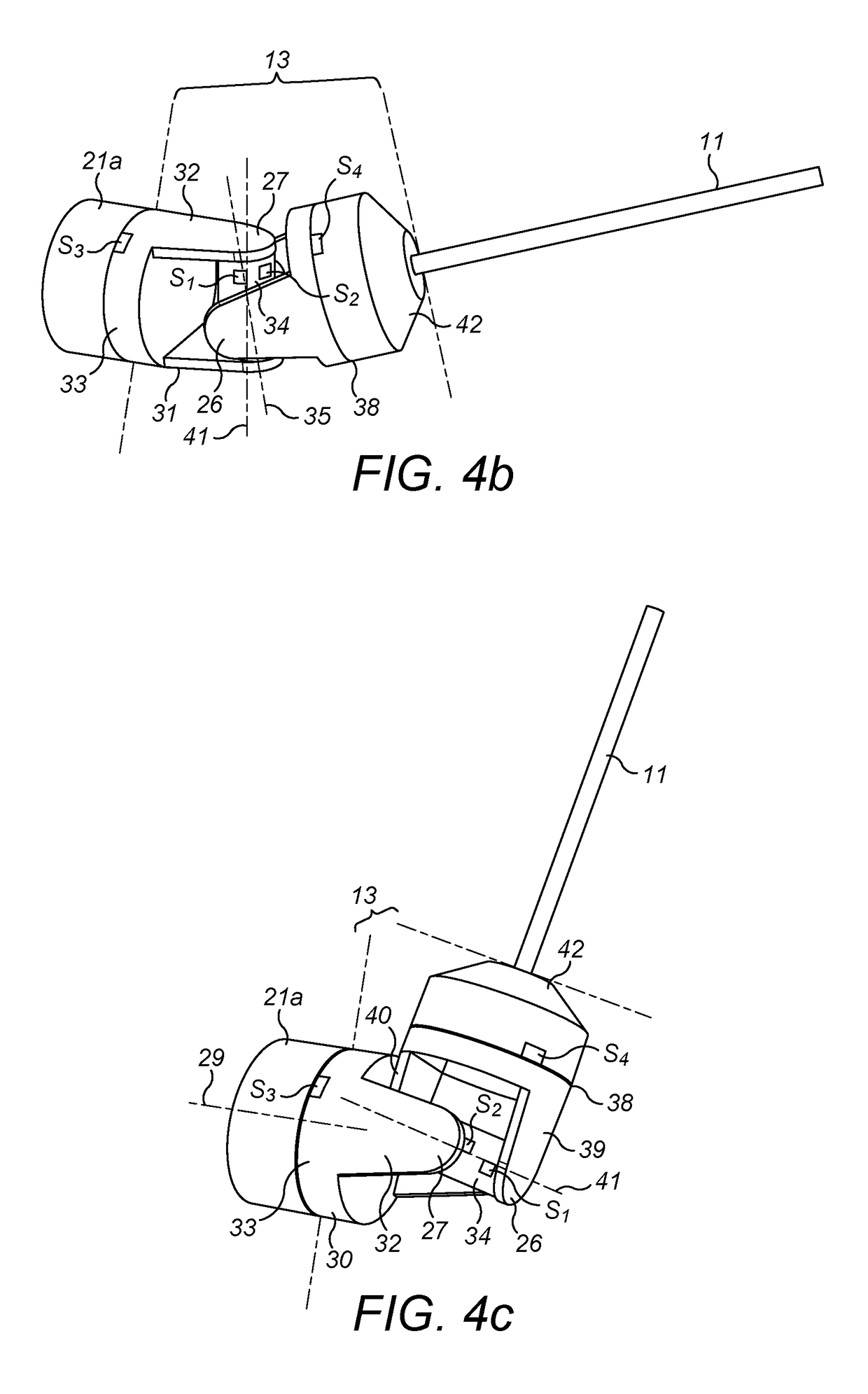Torque sensing in a surgical robotic wrist
a robotic wrist and torque sensing technology, applied in the field of robots, can solve the problems of insufficient space, inability to locate the robot base, and excessive weight of the robot,
- Summary
- Abstract
- Description
- Claims
- Application Information
AI Technical Summary
Problems solved by technology
Method used
Image
Examples
Embodiment Construction
[0026]The surgical robot arm of FIG. 3 has a wrist in which two joints that permit rotation about axes generally transverse to the distal portion of the arm are located between two joints that permit rotation about axes generally parallel to the distal portion of the arm. This arrangement permits the instrument to move in a hemispherical space whose base is centred on the distal part of the arm, but without requiring high-speed motion of one of the joints in order to move the end effector smoothly, and without requiring motion of any of the other parts of the arm.
[0027]In more detail, FIG. 3 shows a robot arm (indicated generally at 10) having a surgical instrument 11 attached thereto. The robot arm extends from a base 12. The base could be mounted to the floor of an operating theatre, or to a fixed plinth, could be part of a mobile trolley or cart, could be mounted to a bed or could be mounted to the ceiling of an operating room. The base is fixed in place relative to the patient's...
PUM
 Login to View More
Login to View More Abstract
Description
Claims
Application Information
 Login to View More
Login to View More - R&D
- Intellectual Property
- Life Sciences
- Materials
- Tech Scout
- Unparalleled Data Quality
- Higher Quality Content
- 60% Fewer Hallucinations
Browse by: Latest US Patents, China's latest patents, Technical Efficacy Thesaurus, Application Domain, Technology Topic, Popular Technical Reports.
© 2025 PatSnap. All rights reserved.Legal|Privacy policy|Modern Slavery Act Transparency Statement|Sitemap|About US| Contact US: help@patsnap.com



